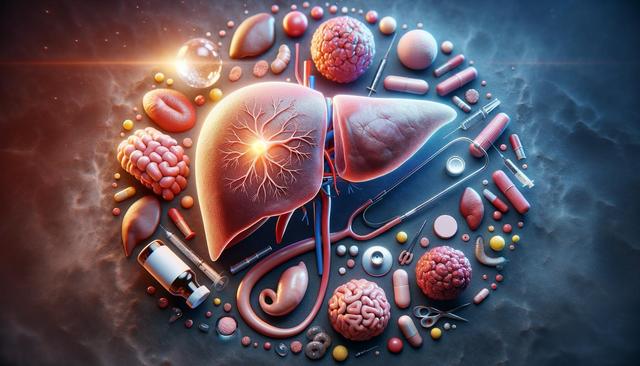Recognizing the Early Signs of Liver Cirrhosis
Liver cirrhosis develops gradually, often without obvious symptoms in the initial stages. However, as the liver becomes increasingly scarred and less able to function, the body begins to show warning signs. Recognizing the Early Signs of Liver Cirrhosis can make a significant difference in managing the disease early and avoiding further complications. Some early indicators include fatigue, unexplained weight loss, and discomfort in the upper right abdomen. These may be subtle at first, but they signal underlying liver dysfunction that requires attention. As liver damage progresses, symptoms such as yellowing of the skin and eyes (jaundice), swelling in the legs or abdomen (edema or ascites), and increased bruising or bleeding may appear. These signs reflect the liver’s reduced ability to filter toxins, produce proteins, and regulate blood clotting.
Paying close attention to these bodily cues and seeking medical advice when they arise is crucial. Early diagnosis allows for better management through lifestyle adjustments and medical intervention, potentially slowing the progression of cirrhosis.
Top 5 Symptoms of Liver Cirrhosis to Watch For
Understanding the most common symptoms can help individuals and caregivers stay alert to changes that may require medical evaluation. The Top 5 Symptoms of Liver Cirrhosis to Watch For include:
- Persistent fatigue and weakness
- Loss of appetite and unintended weight loss
- Swelling in the abdomen or legs
- Jaundice (yellowing of the skin and eyes)
- Easy bruising or bleeding
These symptoms typically indicate that liver function has been significantly impaired. In some cases, individuals may also experience itching, confusion, or changes in sleep patterns, which can result from the buildup of toxins in the blood that the liver is unable to filter effectively. If any of these symptoms are present, consulting a healthcare provider is essential for further evaluation and to determine the extent of liver damage.
Understanding the Common Causes and Risk Factors for Cirrhosis
Cirrhosis can result from various chronic liver conditions, many of which are preventable or manageable with early detection. Understanding the Common Causes and Risk Factors for Cirrhosis is key to reducing one’s risk. Some of the leading causes include:
- Chronic alcohol consumption
- Hepatitis B or C infections
- Nonalcoholic fatty liver disease (NAFLD)
- Autoimmune liver diseases
- Genetic disorders such as hemochromatosis or Wilson’s disease
Additional risk factors include obesity, diabetes, and prolonged exposure to certain toxins or medications. By addressing these underlying conditions and modifying lifestyle choices—such as reducing alcohol intake, maintaining a healthy weight, and managing blood sugar levels—individuals can significantly lower their risk of developing cirrhosis. Regular health screenings and vaccinations for hepatitis can also play a protective role.
Diagnostic Imaging and Medical Evaluation for Liver Damage
Early and accurate diagnosis of liver damage is essential to determine the appropriate course of treatment. Diagnostic Imaging and Medical Evaluation for Liver Damage typically begins with a physical exam and a review of medical history, followed by blood tests to assess liver enzyme levels, bilirubin, and clotting factors. Imaging techniques such as ultrasound, CT scans, and MRI are commonly used to visualize the liver’s size, shape, and texture. These tools help detect abnormalities such as nodules, scarring, or fluid accumulation.
In some cases, a liver biopsy may be performed to confirm the presence and stage of cirrhosis. Non-invasive tests like elastography are also gaining popularity for measuring liver stiffness, which correlates with the degree of fibrosis. These diagnostic tools allow physicians to monitor disease progression and tailor treatment plans accordingly. Timely evaluation not only confirms the diagnosis but also helps identify the underlying cause, enabling targeted interventions.
Treatment Options and Long-Term Management
Once diagnosed, cirrhosis requires ongoing care to manage symptoms and prevent complications. Treatment Options and Long-Term Management focus on slowing disease progression, managing underlying causes, and improving quality of life. Depending on the cause of cirrhosis, treatment may include antiviral medications for hepatitis, medications to reduce liver inflammation, or interventions to manage complications like portal hypertension or fluid retention.
Lifestyle modifications are a cornerstone of long-term management. These may involve:
- Eliminating alcohol consumption
- Adopting a balanced, low-sodium diet
- Regular physical activity tailored to the individual’s condition
- Routine monitoring through liver function tests and imaging
In advanced cases, liver transplantation may be considered when the liver can no longer perform its essential functions. Early detection and proactive management can significantly improve outcomes, making it possible for many individuals with cirrhosis to maintain a relatively stable condition for years.
Conclusion: Taking Charge of Liver Health
Liver cirrhosis is a serious condition, but it is not without hope. By Recognizing the Early Signs of Liver Cirrhosis and understanding its causes and symptoms, individuals can take meaningful steps toward preserving liver function. The Top 5 Symptoms of Liver Cirrhosis to Watch For serve as important warning signs that should not be ignored. With the help of Diagnostic Imaging and Medical Evaluation for Liver Damage, healthcare providers can identify the stage of the disease and guide patients through effective Treatment Options and Long-Term Management strategies. Early action, informed choices, and consistent medical care are key to living well with liver cirrhosis and reducing the risk of life-threatening complications.




Leave a Reply